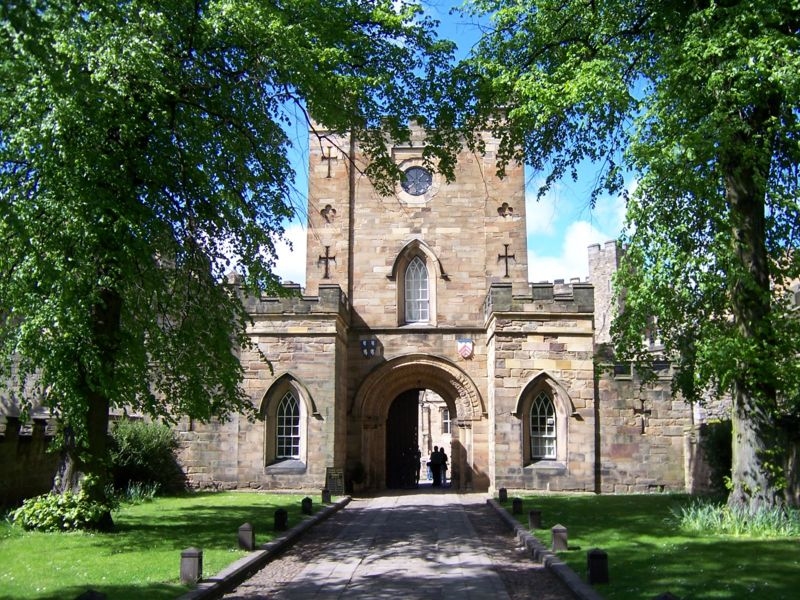
We arrive in Durham, park in a multi-level parking garage overlooking the square and head directly for the castle, where we discover that it is an hour past the time for the last guided tour. We stand in the arched gatehouse looking and feeling a bit dejected.
The castle is used as a dormitory for Durham University and only residents are permitted beyond the gates unescorted after 4:00PM. It's now well past that, but a very kind man with keys to the castle takes pity on us and leads us through a small side door and into the castle. We have come to see a carved archway that until recently had been covered in plaster. When the plaster was removed a treasure was uncovered.
Trailing behind the man, we climb a dimly lit stone staircase, then down a hall and he's moving so fast and saying "Come on then, quickly." I know he's not supposed to be doing this, so I hasten my step but my eyes are drinking in as much as they can as I walk: brocades and tapestries and delicate tables with floral displays and then ... there it is. It's the most intricately carved stone I've seen yet and it looms above me in a graceful arch, appearing to be brand new, as if the masons had just put away their tools.
It's massive and I want to touch it, stand under it, walk through it and admire it from every angle, but the little man is jingling his keys in his pocket and shifting back and forth on the balls of his feet. I just know that he's suppressing a tremendous sigh, so I sigh for him, thank him and follow him back out the way we'd arrived. Obviously relieved to be back at his post as keeper of the castle gates he's all smiles now and we thank him profusely once again for allowing us in.
Making our way past the Cathedral Green, where students lounge in the late afternoon sunlight and play at "footy," kicking a soccer ball about, we head for the cathedral.

Durham Castle is a Norman castle in the city of Durham, England, which has been wholly occupied since 1840 by University College, Durham. The castle stands on top of a hill above the River Wear on Durham's peninsula, opposite Durham Cathedral.
Construction of the Castle began in 1072 under the orders of William the Conqueror, six years after the Norman Conquest of England, and soon after the Normans first came to the North, as a projection of the Norman kings' power in the north of England. It is an example of the early motte and bailey castles favored by the Normans.
The holder of the office of the Bishop of Durham was appointed by the King to exercise royal authority on his behalf, with the castle being his seat. It remained the bishop's palace for the bishops of Durham until the bishops made Auckland Castle their primary residence; the castle was converted into the first college of Durham University in 1832.
Read more about Durham Castle at Wikipedia.